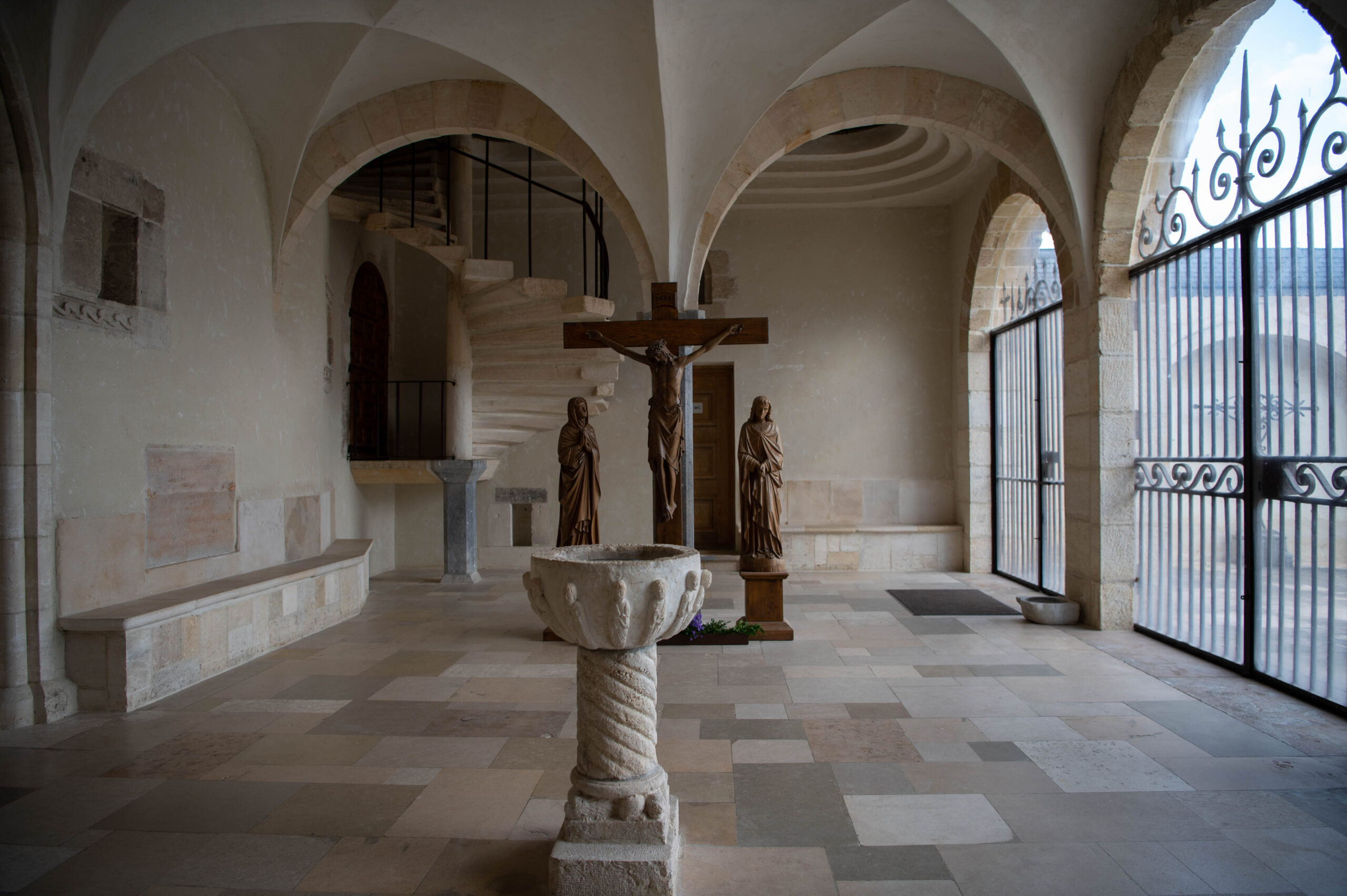The Trappists
As we occasionally enjoy drinking a Belgium beer we decided to visit the Dutch brewery La Trappe in Berkel-Enschot where we were introduces with the term Trappist beer and it’s unique history. We then decided to make it our quest to visit each of the 13 Trappist breweries in the world.

The term “Trappist” is protected by law, and can only be used to describe beers produced by 13 monasteries worldwide that meet strict criteria, including that the beer must be brewed within the walls of the monastery by or under the supervision of the monks. The profits from the sale of Trappist beers are used to support the monastery and its charitable works.
The Cistercian order of monks was founded in the 11th century, and was known for its strict adherence to the Rule of St. Benedict. The order split into two branches in the 17th century, with one branch (known as the Trappists) emphasizing strict monasticism and manual labor. Trappist monasteries have been brewing beer since the 17th century, and the tradition has continued to the present day
Unfortunately, at this time 2 of the breweries no longer are allowed to brew under the name of Trappist as they can no longer apply to the preconditions
Now, let’s take a closer look at each of the 11 Trappist breweries, starting with the one we have already visited, and their beers:

La Trappe is a Trappist brewery located in the Netherlands, at the Koningshoeven Abbey in the town of Berkel-Enschot. The brewery was founded in 1884, and it is one of the eleven breweries that produces Trappist beers.
La Trappe produces a range of beers, including a Blond, Dubbel, Tripel, Quadrupel, and several seasonal beers. Each beer has its own unique flavor profile and characteristics, but all are brewed according to the traditional Trappist method of brewing.
One of La Trappe’s most well-known beers is their Quadrupel. This beer has a dark brown color, with a rich aroma of dark fruit, chocolate, and spices. It has a complex flavor, with notes of caramel, toffee, and a slight bitterness that balances out the sweetness. The beer has a high alcohol content, at around 10%, which gives it a full-bodied and warming character.
La Trappe is also committed to sustainability and environmental responsibility. They use renewable energy sources, recycle their wastewater, and have a program in place to reduce their carbon footprint.
In addition to producing excellent beer, La Trappe is also involved in charitable works. The brewery supports several initiatives, including a program to help children in Uganda gain access to clean water and education.
La Trappe is a unique Trappist brewery that is known for producing exceptional beers while also remaining committed to sustainability and charitable works. Their range of beers offers something for every taste preference, and their dedication to quality and tradition is evident in every sip.
Westmalle is a Trappist brewery located in the Belgian province of Antwerp, at the Abbey of Our Lady of the Sacred Heart. The brewery was founded in 1836 and has since become one of the most well-known and respected Trappist breweries in the world.

Westmalle produces three beers: a Dubbel, Tripel, and Extra. All three beers are brewed according to the traditional Trappist method and use only natural ingredients. They are bottle-conditioned, which means that they undergo a secondary fermentation in the bottle, resulting in a more complex and effervescent beer.
Westmalle Dubbel is a dark brown beer with a creamy head and a complex aroma of dark fruit, caramel, and spices. It has a rich, malty flavor with notes of raisins, figs, and a subtle bitterness that balances out the sweetness. The beer has a medium body and a smooth, dry finish.
Westmalle Tripel is a golden beer with a fruity aroma and a complex flavor that has notes of banana, clove, and a slight bitterness. It has a high alcohol content, at around 9.5%, which gives it a warming character.
Westmalle Extra is a lighter beer than the Dubbel and Tripel, with a slightly hoppier flavor and a lower alcohol content of 4.8%. It has a refreshing character that makes it a popular choice for summer drinking.
One of the unique aspects of Westmalle is that the brewery is entirely self-sufficient. The Trappist monks grow their own hops and barley, and even have their own water source. This allows them to have complete control over the quality of their ingredients and the brewing process, ensuring that each beer is of the highest quality.
In addition to producing exceptional beer, Westmalle is also involved in charitable works. The brewery supports several initiatives, including a program to help refugees and a program to support the elderly.
In conclusion, Westmalle is a world-renowned Trappist brewery that produces exceptional beers using traditional methods and natural ingredients. Its commitment to quality, tradition, and charitable works make it a brewery that is not only respected but also beloved by beer enthusiasts around the world.Orval is a Trappist brewery located in the Belgian province of Luxembourg, at the Abbey of Orval. The brewery was founded in 1931 and has since become one of the most iconic and sought-after Trappist breweries in the world.
Orval produces a single beer that is widely regarded as one of the most unique and complex Trappist beers. The beer is a Belgian Pale Ale that undergoes a secondary fermentation in the bottle with Brettanomyces, a wild yeast strain that adds a distinct and complex character to the beer.

Orval has a bright, golden color with a slightly hazy appearance and a creamy, white head. It has a complex aroma of fruity esters, spicy phenols, and a slight funkiness from the Brettanomyces. The flavor is similarly complex, with notes of citrus, spice, and a slightly tart finish. The beer has a medium body and a high carbonation, which contributes to its effervescence and refreshing character.
One of the unique aspects of Orval is that the beer is aged in the bottle for several months before it is released, allowing the flavors to develop and mature. This also means that the beer can be aged for several years, resulting in even more complex and nuanced flavors.
In addition to producing exceptional beer, Orval is also involved in conservation efforts. The abbey grounds include a nature reserve and botanical garden, and the brewery is committed to preserving the local ecosystem and biodiversity.Orval is a Trappist brewery that is known for producing a single, unique beer that is beloved by beer enthusiasts around the world. Its commitment to quality, tradition, and conservation makes it a brewery that is respected not only for its beer but also for its impact on the environment.
Rochefort is a Trappist brewery located in the Belgian province of Namur, at the Abbey of Notre-Dame de Saint-Rémy. The brewery was founded in 1595 and has been producing beer for over 400 years.

Rochefort produces three beers: a 6, 8, and 10, each named after their respective alcohol content. The beers are brewed according to traditional Trappist methods and use only natural ingredients. They are bottle-conditioned, which means that they undergo a secondary fermentation in the bottle, resulting in a complex and effervescent beer.
Rochefort 6 is a dark brown beer with a smooth, malty flavor and notes of dark fruit, caramel, and spices. It has a relatively low alcohol content of 7.5%, making it a popular choice for those who enjoy a flavorful beer without too much of a kick.
Rochefort 8 is a dark amber beer with a rich, complex flavor that has notes of dark fruit, caramel, and a slight bitterness. It has a higher alcohol content than the Rochefort 6, at around 9.2%, which gives it a warming character.
Rochefort 10 is a dark brown beer with a complex aroma of dark fruit, spices, and a slight hop bitterness. It has a full-bodied flavor with notes of caramel, chocolate, and a warming alcohol character. It has the highest alcohol content of the three Rochefort beers, at around 11.3%.
One of the unique aspects of Rochefort is that the brewery is entirely self-sufficient. The Trappist monks grow their own hops and barley, and even have their own water source. This allows them to have complete control over the quality of their ingredients and the brewing process, ensuring that each beer is of the highest quality.In addition to producing exceptional beer, Rochefort is also involved in charitable works. The brewery supports several initiatives, including a program to help the elderly and disabled, and a program to provide clean water to communities in need.

Chimay is a Trappist brewery located in the Belgian province of Hainaut. The brewery was founded in 1862 by Trappist monks and has since become one of the most well-known and respected breweries in the world.
Chimay produces a range of beers, including a Blonde, Dubbel, Tripel, and Grande Réserve, which is a dark, rich beer with a high alcohol content. Each beer has its own unique flavor profile and characteristics, but all are brewed according to the traditional Trappist method of brewing.
Chimay Blue, or Grande Réserve, is perhaps the brewery’s most famous beer. It is a dark beer with a rich, complex flavor that has notes of dark fruit, caramel, and chocolate. It has a high alcohol content of 9%, which adds to its full-bodied and warming character.
Chimay also produces a cheese that is made from the same milk used to brew the beer. The cheese is called Chimay Grand Classique and has a creamy texture and a nutty flavor that pairs well with the brewery’s beers.
One of the unique aspects of Chimay is that the brewery is entirely self-sufficient. The Trappist monks grow their own hops and barley, and even have their own water source. This allows them to have complete control over the quality of their ingredients and the brewing process, ensuring that each beer is of the highest quality.
In addition to producing excellent beer, Chimay is also committed to supporting its local community and the environment. The brewery has a number of sustainable initiatives in place, such as using renewable energy sources and recycling its wastewater.
Coming up:
- Westvleteren (Belgium)
- Zundert (Netherlands)
- Tynt Meadow (England)
- Engelszell (Austria)
- Tre Fontana (Italy)




